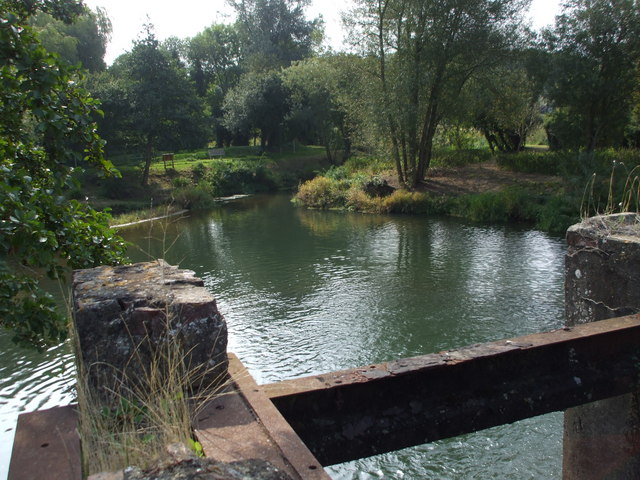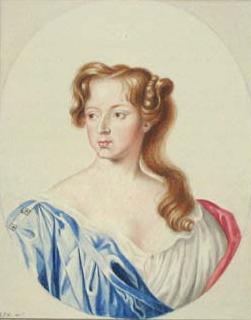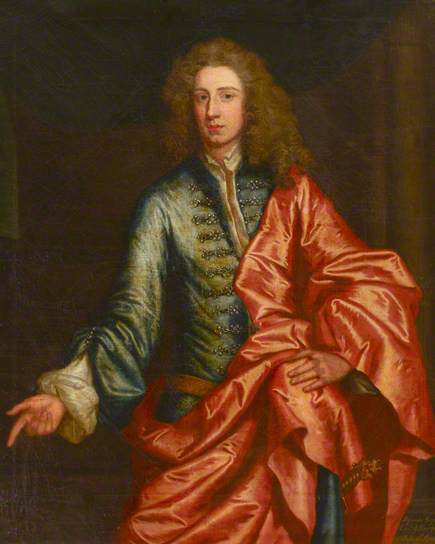|
Coultershaw
Coultershaw Bridge is a rural community situated south of the town Petworth in West Sussex, England where the A285 road from Petworth to Chichester crosses the River Rother. Between 1792 and 1888, there were also wharves and a lock at Coultershaw on the Rother Navigation. Until the 1970s, a water mill stood on the river housing a beam engine which was originally installed in 1782 by the 3rd Earl of Egremont to pump water from the river to Petworth and his home at Petworth House. Following the demolition of the mill, the Coultershaw Beam Pump was restored to working order and is now a Scheduled Ancient Monument, which is open to the public on summer weekends. Etymology In Saxon times the locality was known as "Cuóheres Hóh", meaning "Couhere's spur of land". By 1240, the name was given as "Cuteresho". Since then, the name has been spelt in many different ways, including "Cowtershall" (1535), "Cowtershawe" (1564), "Coultersole" (1716), "Cowdersole" (1779), "Cowters Hall" (179 ... [...More Info...] [...Related Items...] OR: [Wikipedia] [Google] [Baidu] |
Coultershaw Mill By Francis Frith
Coultershaw Bridge is a rural community situated south of the town Petworth in West Sussex, England where the A285 road from Petworth to Chichester crosses the River Rother. Between 1792 and 1888, there were also wharves and a lock at Coultershaw on the Rother Navigation. Until the 1970s, a water mill stood on the river housing a beam engine which was originally installed in 1782 by the 3rd Earl of Egremont to pump water from the river to Petworth and his home at Petworth House. Following the demolition of the mill, the Coultershaw Beam Pump was restored to working order and is now a Scheduled Ancient Monument, which is open to the public on summer weekends. Etymology In Saxon times the locality was known as "Cuóheres Hóh", meaning "Couhere's spur of land". By 1240, the name was given as "Cuteresho". Since then, the name has been spelt in many different ways, including "Cowtershall" (1535), "Cowtershawe" (1564), "Coultersole" (1716), "Cowdersole" (1779), "Cowters Hall" (179 ... [...More Info...] [...Related Items...] OR: [Wikipedia] [Google] [Baidu] |
River Rother, West Sussex
The River Rother flows from Empshott in Hampshire, England, to Stopham in West Sussex, where it joins the River Arun. At long, most of the river lies within West Sussex except for the first which lie in Hampshire. The upper river, from its source to Midhurst, has been used to power watermills, with the earliest recorded use being in 1086, when the Domesday survey was conducted. Although none are still operational, many of the buildings which housed the mills still exist, and in some cases, still retain their milling machinery. This upper section is also noted for a number of early bridges, which have survived since their construction in the fifteenth, sixteenth and seventeenth centuries. The lower river, from Midhurst to its junction with the River Arun, has been used for navigation. Boats used the section from the Arun to Fittleworth following improvements made to the Arun in 1615, and after the Arun Navigation was completed in 1790, the Earl of Egremont made the river na ... [...More Info...] [...Related Items...] OR: [Wikipedia] [Google] [Baidu] |
Rother Navigation
The River Rother flows from Empshott in Hampshire, England, to Stopham in West Sussex, where it joins the River Arun. At long, most of the river lies within West Sussex except for the first which lie in Hampshire. The upper river, from its source to Midhurst, has been used to power watermills, with the earliest recorded use being in 1086, when the Domesday survey was conducted. Although none are still operational, many of the buildings which housed the mills still exist, and in some cases, still retain their milling machinery. This upper section is also noted for a number of early bridges, which have survived since their construction in the fifteenth, sixteenth and seventeenth centuries. The lower river, from Midhurst to its junction with the River Arun, has been used for navigation. Boats used the section from the Arun to Fittleworth following improvements made to the Arun in 1615, and after the Arun Navigation was completed in 1790, the Earl of Egremont made the river na ... [...More Info...] [...Related Items...] OR: [Wikipedia] [Google] [Baidu] |
Beam Engine
A beam engine is a type of steam engine where a pivoted overhead beam is used to apply the force from a vertical piston to a vertical connecting rod. This configuration, with the engine directly driving a pump, was first used by Thomas Newcomen around 1705 to remove water from mines in Cornwall. The efficiency of the engines was improved by engineers including James Watt, who added a separate condenser; Jonathan Hornblower and Arthur Woolf, who compounded the cylinders; and William McNaught, who devised a method of compounding an existing engine. Beam engines were first used to pump water out of mines or into canals but could be used to pump water to supplement the flow for a waterwheel powering a mill. The rotative beam engine is a later design of beam engine where the connecting rod drives a flywheel by means of a crank (or, historically, by means of a sun and planet gear). These beam engines could be used to directly power the line-shafting in a mill. They also c ... [...More Info...] [...Related Items...] OR: [Wikipedia] [Google] [Baidu] |
Petworth
Petworth is a small town and civil parishes in England, civil parish in the Chichester (district), Chichester District of West Sussex, England. It is located at the junction of the A272 road, A272 east–west road from Heathfield, East Sussex, Heathfield to Winchester and the A283 road, A283 Milford, Surrey, Milford to Shoreham-by-Sea road. Some twelve miles (21 km) to the south west of Petworth along the A285 road lies Chichester and the south-coast. The parish includes the settlements of Byworth and Hampers Green and covers an area of . In 2001 the population of the parish was 2,775 persons living in 1,200 households of whom 1,326 were economically active. At the 2011 Census the population was 3,027. History The town is mentioned in the Domesday Book of 1086 as having 44 households (24 villagers, 11 smallholders and nine slaves) with woodland and land for ploughing and pigs and of meadows. At that time it was in the ancient Hundred (county division), hundred of Rother ... [...More Info...] [...Related Items...] OR: [Wikipedia] [Google] [Baidu] |
Elizabeth Seymour, Duchess Of Somerset
Elizabeth Seymour, Duchess of Somerset and ''suo jure'' Baroness Percy (26 January 1667 – 23/24 November 1722) was an English heiress. She was styled Lady Elizabeth Percy between 1667 and 1679, Countess of Ogle between 1679 and 1681, Lady Elizabeth Thynne between 1681 and 1682, and Duchess of Somerset between 1682 and 1722. She was the only surviving child and sole heiress of Joceline Percy, 11th Earl of Northumberland (1644–1670). Lady Elizabeth was one of the closest personal friends of Queen Anne, which led Jonathan Swift to direct at her one of his sharpest satires, ''The Windsor Prophecy'', in which she was called "Carrots". Marriages and children She married three times, having children by the third marriage only: Henry Cavendish, Earl of Ogle Aged 12, she married, on 27 March 1679, the 20-year-old Henry Cavendish, Earl of Ogle (1659 – 1 November 1680), the only son and heir of Henry Cavendish, 2nd Duke of Newcastle, who in accordance with the marriage settle ... [...More Info...] [...Related Items...] OR: [Wikipedia] [Google] [Baidu] |
Valor Ecclesiasticus
The ''Valor Ecclesiasticus'' (Latin: "church valuation") was a survey of the finances of the church in England, Wales and English controlled parts of Ireland made in 1535 on the orders of Henry VIII. It was colloquially called the Kings books, a somewhat ambiguous term. In 1534, King Henry parted with the Pope and the Catholic religion and by the Act of Supremacy made himself the supreme head of the church in his lands. One of his first actions in his new role was to impose taxes on the clergy. Taxes traditionally paid by clerics to the Pope were now to be given to him, and Henry also decided in late 1534 to create a new annual income tax of 10% on the income from all church lands and offices. To properly assess the new tax a survey of all church property and revenues had to be made. In January 1535, the government appointed commissions throughout the country to conduct the survey. All clergymen, parish priests, heads of monasteries, colleges, hospitals and other institutions unde ... [...More Info...] [...Related Items...] OR: [Wikipedia] [Google] [Baidu] |
Henry VIII Of England
Henry VIII (28 June 149128 January 1547) was King of England from 22 April 1509 until his death in 1547. Henry is best known for his six marriages, and for his efforts to have his first marriage (to Catherine of Aragon) annulled. His disagreement with Pope Clement VII about such an annulment led Henry to initiate the English Reformation, separating the Church of England from papal authority. He appointed himself Supreme Head of the Church of England and dissolved convents and monasteries, for which he was excommunicated by the pope. Henry is also known as "the father of the Royal Navy" as he invested heavily in the navy and increased its size from a few to more than 50 ships, and established the Navy Board. Domestically, Henry is known for his radical changes to the English Constitution, ushering in the theory of the divine right of kings in opposition to papal supremacy. He also greatly expanded royal power during his reign. He frequently used charges of treason and ... [...More Info...] [...Related Items...] OR: [Wikipedia] [Google] [Baidu] |
Algernon Seymour, 7th Duke Of Somerset
General Algernon Seymour, 7th Duke of Somerset (11 November 16847 February 1750), styled Earl of Hertford until 1748, of Petworth House in Sussex, was a British Army officer and Whig politician who sat in the House of Commons from 1708 until 1722 when he was raised to the House of Lords as Baron Percy. Background Seymour was the only son of Charles Seymour, 6th Duke of Somerset, by his first wife, the heiress Lady Elizabeth Percy, deemed Baroness Percy in her own right, the only surviving child of Joceline Percy, 11th and last Earl of Northumberland. He set out on a Grand Tour at the age of 17, visiting Italy from 1701 to 1703 and Austria in 1705. Public life Seymour was still in Austria when he was returned as Member of Parliament for Marlborough on the recommendation of his father at a by-election on 27 November 1705. In 1706 he was appointed Lord-Lieutenant of Sussex for the rest of his life. He went to Flanders in the summer of 1708 to serve as a volunteer under the Duke ... [...More Info...] [...Related Items...] OR: [Wikipedia] [Google] [Baidu] |
Charles Seymour, 6th Duke Of Somerset
Charles Seymour, 6th Duke of Somerset (13 August 16622 December 1748), known by the epithet "The Proud Duke", was an English peer. He rebuilt Petworth House in Sussex, the ancient Percy seat inherited from his wife, in the palatial form which survives today. According to the ''Encyclopædia Britannica'' Eleventh Edition, he was a remarkably handsome man, and inordinately fond of taking a conspicuous part in court ceremonial; his vanity, which earned him the sobriquet of "the proud duke", was a byword among his contemporaries and was the subject of numerous anecdotes; Macaulay described him as "a man in whom the pride of birth and rank amounted almost to a disease". Origins Charles Seymour was the second son of Charles Seymour, 2nd Baron Seymour of Trowbridge (died 1665), of Marlborough Castle in Wiltshire, by his wife Elizabeth Alington (1635–1692). The 2nd baron was (in a junior line) a great-great-grandson of Edward Seymour, 1st Duke of Somerset (executed 1552), brother of ... [...More Info...] [...Related Items...] OR: [Wikipedia] [Google] [Baidu] |







